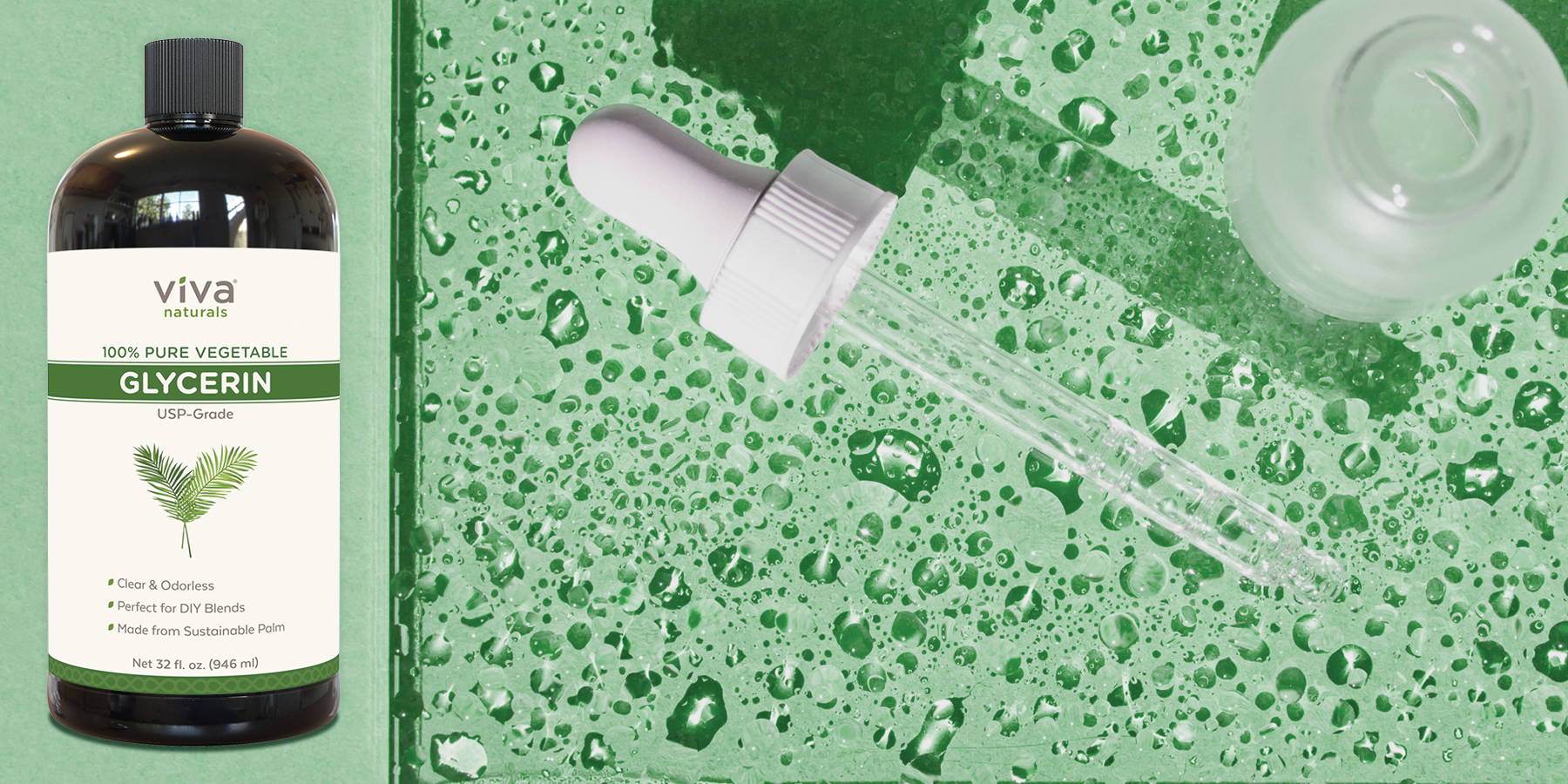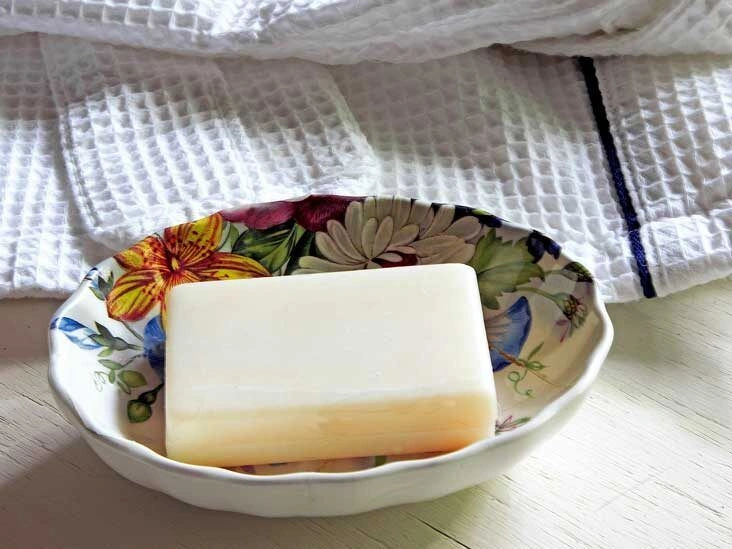Vegetable glycerin appears in food, beauty products and medicines. It can help hydrate the skin, ease constipation and support hydration and athletic output.
Also called glycerol or glycerine, vegetable glycerin is a clear liquid usually produced from soybean, coconut or palm oils.
It’s odorless with a faintly sweet flavor and a syrupy texture.
While especially common in cosmetics, vegetable glycerin has a variety of other applications and may offer health advantages, from improved skin condition to enhanced hydration and gut support.
This article reviews what vegetable glycerin is, how it’s used, its potential advantages and its possible adverse effects.

What is vegetable glycerin?
Glycerin is a sugar alcohol that can originate from animal sources, plants or petroleum.
The vegetable form is made from plant-derived oils. Historical accounts suggest it was first stumbled upon over two centuries ago when olive oil was heated with lead monoxide.
It wasn’t until the late 19th century that glycerin became industrially important, initially used in the manufacture of explosives.
Vegetable glycerin is produced by heating triglyceride-rich plant fats — such as palm, soy and coconut oils — under pressure or treating them with a strong alkali like lye.
That process separates the glycerin from the fatty acids and combines it with water, creating an odorless, sweet, syrup-like liquid.
SummaryVegetable glycerin is a mildly sweet, syrupy liquid created by heating plant fats under pressure or with a strong alkali.
Common uses
Vegetable glycerin is extensively used across food, cosmetic and pharmaceutical sectors.
For example, it’s commonly added to foods to help blend oil- and water-based ingredients, provide sweetness or retain moisture in the finished product.
It can also prevent ice-crystal formation in frozen items such as low-fat frozen yogurt, ice cream and other frozen desserts.
Glycerin is a frequent component in medications, including certain heart drugs, suppositories, cough remedies and anesthetic formulations.
It’s also found in toothpaste, where it helps stop the paste from drying out or hardening inside the tube.
Additionally, vegetable glycerin is widely used in soaps, candles, lotions, deodorants and makeup.
SummaryVegetable glycerin serves many purposes, with the most common being in cosmetics, pharmaceuticals and food products.
Potential benefits
Vegetable glycerin is promoted for various health benefits.
However, only a handful of these claims have scientific support, and the available studies tend to be limited in number and size. More research is necessary to confirm many of the proposed benefits.
Below are the benefits that currently have the strongest supporting evidence.
May moisturize skin
Vegetable glycerin is a favored ingredient in skincare due to its moisturizing properties.
Research indicates that applying glycerin to the skin can gradually enhance smoothness and suppleness. In fact, creams containing glycerin may boost skin hydration in as little as 10 days.
One study found a glycerin-based cream outperformed creams containing silicone oil or hyaluronic acid at improving skin hydration and reducing moisture loss (3).
In another trial, adding glycerin to a warm bath proved more effective at raising skin moisture and protecting against irritation than a warm bath alone (4).
May promote skin health
Vegetable glycerin may support overall skin health by soothing irritation, guarding against infection and aiding wound repair.
Studies show products containing glycerin can protect skin from irritants and microbes and help calm inflamed or damaged skin.
Additionally, vegetable glycerin may form a protective barrier that shields skin from environmental stressors like wind and cold.
One study noted glycerin reduced sensations of smarting in people with eczema more than a placebo, though it did not significantly affect stinging, itching, dryness or irritation.
May reduce constipation
Vegetable glycerin can help relieve constipation.
It works by drawing water into the intestines, producing a laxative effect that helps stool move more easily through the digestive tract.
For this reason, glycerin is commonly used in suppositories.
In one study, glycerin suppositories were notably more effective at easing constipation caused by opioid pain medications than other laxatives (8).
In another comparison, a glycerin enema relieved constipation 16.5% more effectively than a liquid soap enema (9).
May boost hydration and athletic performance
Glycerin may enhance hydration, which can in turn improve athletic performance.
Dehydration substantially impairs performance, particularly when sweat loss exceeds about 2% of body weight.
Preventing dehydration involves consuming sufficient fluids before and during exercise, but drinking during certain activities can be impractical, making pre-exercise hydration important.
Drinking large volumes shortly before exercise often results in a significant portion being lost as urine within the next hour.
However, a meta-analysis found that adding 1.1 g/kg body weight (about 0.5 g/lb) of glycerin to water consumed before exercise increased fluid retention by roughly 50% versus water alone. Glycerin may also yield modest performance gains.
Another study reported a glycerin-containing beverage was more effective than water or a sports drink at improving hydration in athletes who experienced substantial sweat losses during exercise (12).
SummaryVegetable glycerin may moisturize skin, reduce irritation, help protect against infection and support wound healing. It can also relieve constipation and improve hydration and exercise performance. Nevertheless, further studies are needed.
Potential side effects
Vegetable glycerin is generally regarded as safe.
Still, applying it topically could trigger an allergic reaction in some people, so it’s wise to test a small amount first to observe how your skin responds.
When taken orally, vegetable glycerin has been associated with headaches, dizziness, nausea, vomiting and increased thirst in certain individuals (13).
Because glycerin is a sugar alcohol that isn’t fully absorbed by the body, excessive ingestion — whether on its own or via foods — may cause gas and diarrhea.
SummaryVegetable glycerin is usually safe, but some people may experience allergic reactions, headaches, nausea, excessive thirst or gastrointestinal upset.
The bottom line
Vegetable glycerin is a clear, odorless, sweet-tasting liquid derived from plant fats.
It’s used in foods, cosmetics and pharmaceuticals and may confer benefits like more hydrated, resilient skin, relief from constipation, better hydration and enhanced physical performance.
If you want to try vegetable glycerin, begin with a small amount to check your tolerance.


















Leave a Reply
You must be logged in to post a comment.